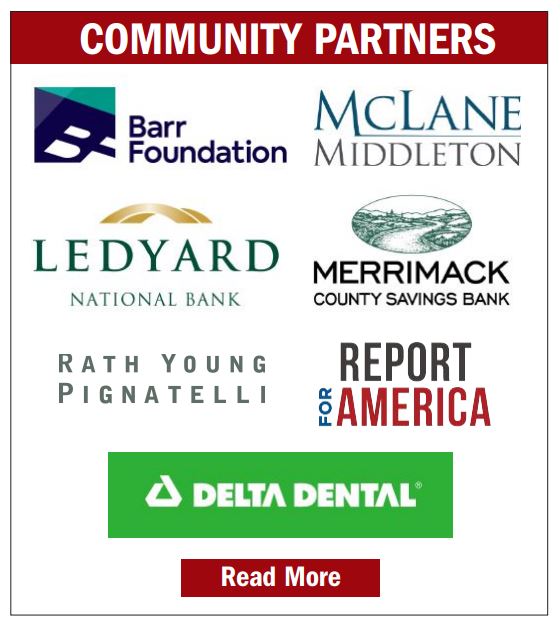After a year of ‘teeny tiny steps,’ advocates aim for bigger child care fixes

The first state chapter of Chamber of Mothers aims to keep support for children and families on the political agenda. Affordable child care and paid family leave are two priorities for the group. ANNMARIE TIMMINS—New Hampshire Bulletin
| Published: 06-11-2024 10:01 AM |
Two years ago, the House speaker appointed a special committee to solve or at least mitigate the child care crisis in New Hampshire. There’s disagreement among lawmakers and child care advocates about its success.
Committee members have sent a few bills to the governor seeking to tweak staffing ratios to allow workers to take additional children. Others would ease zoning requirements for in-home providers and allow a child to remain in child care for more than 13 hours a day in some situations. One would provide supplemental scholarship funding for children experiencing developmental delays.
“Teeny tiny steps” was how Rep. Mary Jane Wallner, a Concord Democrat on the committee, described the legislative efforts. Some of those steps concern her, she said. Wallner, who ran a day care for many years, worries expanding ratios are a step backward if they mean each child will get less care.
That’s not to say there hasn’t been significant attention or other investments in addressing the child care crisis since the pandemic put the shortage of affordable quality care on lawmakers’ radar.
The state has invested nearly $160 million in pandemic assistance, most of it federal dollars, to keep child care providers afloat. Last year, in what advocates called one of the Legislature’s biggest investments, the Senate put $15 million in the budget to vastly increase income thresholds for the state’s child care scholarship to make more families eligible. This year, lawmakers supported a bill that would spend $1 million to increase child care workers’ eligibility for the same scholarship.
Meanwhile, as advocates and lawmakers await the governor’s action on pending bills, they are looking ahead to the fall elections and next year’s budget process with hopes of achieving much more next year.
Here’s what to know about the child care landscape in New Hampshire.
Child care remains incredibly expensive and hard to find.
Article continues after...
Yesterday's Most Read Articles
Last year, the average annual cost of center-based child care for an infant and 4-year-old was $31,868, a 12.5 percent increase from the prior year, according to New Hampshire Fiscal Policy Institute’s recent report, The Fragile Economics of the Child Care Sector.
For married couples earning the median income, $145,289, that would have reflected 20 percent of their annual household income, the report said. Using the same census data, the institute determined that would have equaled 41 percent of annual income for a single man and 61 percent for a single woman.
That’s far above the 7 percent of annual income the U.S. Department of Health and Human Services deems affordable.
Add the state’s high housing costs, and many young Granite State families may effectively have to choose between buying a home or having a child, the NHFPI report said.
Meanwhile, the pre-pandemic shortage of child care slots continues.
The analysis found that between 2018 and 2022, New Hampshire saw an average annual shortage of about 8,400 slots.
Ratio changes are controversial.
Ross Berry of Weare, a Republican who until recently served in the House and chaired that chamber’s Special Committee on Childcare, believed tweaking ratios would have an immediate and significant effect.
Lawmakers passed two bills doing that.
One would allow in-home providers to care for four children in addition to their own kids; the current limit is three. The other would slightly increase the number of infants and toddlers allowed in a child care classroom based on staffing.
Berry, who runs a child care center in Epsom with his wife, describes it as a math solution.
“If there are 330 licensed providers (in the state) and we can now take two kids in a demographic that need it most, we just created 660 new slots throughout the state without spending a single dollar in taxpayer money,” he said. “We’d see immediate results.”
Berry acknowledged the results would likely be more modest because not all child care centers would have the space or staff to qualify. And based on the feedback lawmakers got, many providers wouldn’t participate.
Michele Merritt, president of the advocacy group New Futures, was among those who urged the committee to defeat the bill, saying providers opposed it.
“The opinion of these individuals could not have been more clear – addressing staffing ratios is not the solution,” she wrote. “It would burden already burnt-out staff, create unsafe environments for children, and is simply irresponsible.”
Rebecca Woitkowski, the child and family policy director for the organization, said last week child care advocates will be watching to see how the bill is implemented if the governor signs it. Like Wallner, Woitkowski sees both bills as small changes that won’t solve the child care crisis.
“I don’t think there will be a ton of centers that get a waiver (to expand class size),” she said. “We have to do a lot more in the state overall to strengthen our child care system.”
More people are eligible for more generous assistance.
The most significant child care legislation came last year, not this year, said Jackie Cowell, executive director of the advocacy group Early Learning NH.
Lawmakers included $15 million in the budget to significantly expand the state’s child care scholarship program. Cowell called it transformational. She’s worried, however, that many parents who earned too much to qualify in prior years don’t know they might be eligible now.
Until the eligibility changes took effect in January, a family of three could earn no more than $65,000 a year to be eligible. That limit now is $89,100. And families who receive a child care scholarship will pay no more than 7 percent of their gross income on child care.
“People, honestly, before the change, could easily spend 20 to 30 percent of their gross income on child care,” Cowell said. “Sometimes more than half of take-home pay was for child care.”
Parents must submit an application through the state’s general assistance portal, NH Easy, though it is difficult to find information about the program on the site. Parents can also complete a paper application or apply at their local Department of Health and Human Services office.
Advocates want child care on the ballot.
Until her friends began having children, Tara Ryan, of Durham, thought all parents got three months of paid parental leave because it’s common in the technology field she and her husband were working in.
Now a mother herself, Ryan has discovered how untrue that is – and how hard it is to find affordable child care. She launched the state’s first chapter of Chamber of Mothers in Portsmouth last month determined to change that. Ryan’s message was written on their T-shirt: “Vote like a mother.”
The group is still determining whether it will take up paid family leave, affordable child care, or material health supports first. The goal is to make parents and children a key part of the narrative and legislative agenda.
“We are just moms. We don’t have the political connections,” Ryan said. “My story is not the only one to tell. There are so many stories.”
Her effort won’t be the only one.
Save the Children Action Network, based in Washington, D.C., recently hosted forums with the four gubernatorial candidates focused on the child care crisis. New Futures and Early Learning NH plan to continue their advocacy, too. Wallner hopes to continue her work on the House Special Committee on Childcare, too.
“I was happy to see this year that we were able to demystify that access to child care is not just a mothers’ issue,” said Woitkowski, of New Futures. “That it’s something the state should invest in because it’s a common good and it’s important for child health and development, and really important to the economy of the state.”
Cowell, of Early Learning NH, intends to make that a statewide conversation.
“One of the priorities for the future is to really work together with the Legislature, business community, policy makers, moms and dads … to find another funding source or sources to really raise the compensation for the child care field,” she said. “It can’t just be on the back of the families that need them.”







 Mullet madness: Young man who died in motorcycle accident remembered at local fundraiser
Mullet madness: Young man who died in motorcycle accident remembered at local fundraiser ‘Entire paradigm has to shift’: Majority of parents express support for phone ban, but predict rocky rollout
‘Entire paradigm has to shift’: Majority of parents express support for phone ban, but predict rocky rollout New Hampshire committee seeks to prevent domestic fatalities like murder-suicide in Berlin
New Hampshire committee seeks to prevent domestic fatalities like murder-suicide in Berlin ‘A little piece of everything I like’: New Pittsfield barbershop brings more than a haircut to downtown
‘A little piece of everything I like’: New Pittsfield barbershop brings more than a haircut to downtown
